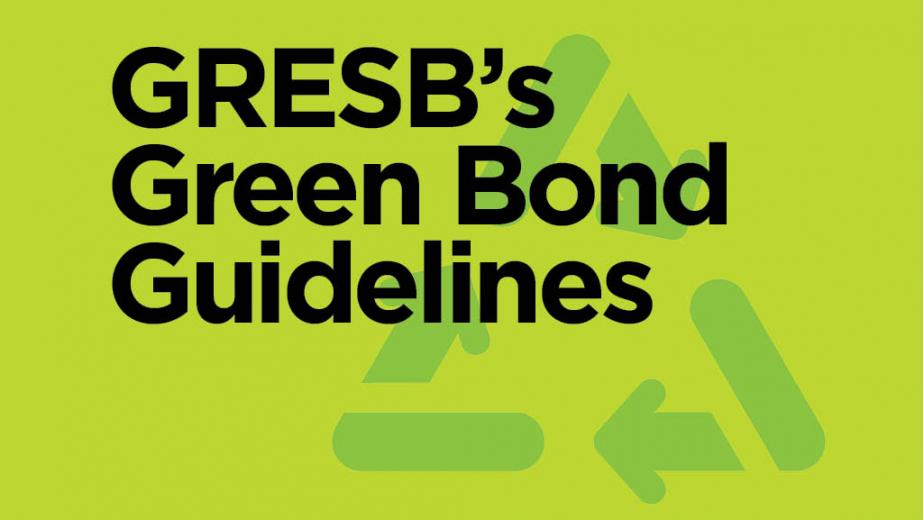1 10
1 10
There are four components covered by the GRESB Green Bond Guidelines are as follows:
- Use of Proceeds: Eight categories represent the environmental impacts inherent to the industry. Each is classified according to asset attributes and actions that either provide environmental benefits or reduce environmental impact, and is addressed within the frameworks of green building rating systems. Eligible green projects span a range of investment activities and construction, including new development, land preservation easements, retrofits and refinancing of existing high-performance buildings.
- Project Evaluation and Selection: Issuers of Green Bonds can evaluate construction and development projects by gathering specific project information at time of investment. Buildings must be third-party certified by one or more green building rating systems: Green Star, LEED or BREEAM. Energy ratings focus on energy efficiency performance of building operations and indicate whether Green Bond investments are directed to energy efficiency or carbon reduction. If a Green Bond encompasses real estate holdings that are not actual buildings, but instead are forestry, mining and minerals or agriculture, environmental certification frameworks specific to the land use objective are required to determine eligibility for a Green Bond. Corporate-level environmental, social and governance policies and supplemental disclosure frameworks are also required to provide broader investor guidance and investment context.
- Management of Proceeds: Upon origination of a Green Bond, issuers must earmark proceeds by directing capital to eligible green projects until the bond proceeds are fully allocated. Issuers should take specific measures to track investment and disclose audit results to investors.
- Reporting: Upon origination and until a Green Bond is retired, issuers must provide ongoing investor disclosures to ensure that market credibility with the Green Bond's objectives is maintained.
- Onsite renewable energy generation powering the building and/or distributed to the grid, such as solar, wind, geothermal or fuel cell.
- Offsite renewable energy purchasing.
Environmental impacts include: carbon emissions, ozone depletion, mineral extraction, infrastructure needs.
Buildings must demonstrate energy-efficiency metrics at above market performance, including:
- Building energy ratings, such as Energy Star
- Net Zero Energy buildings
- Peak-load demand reduction (including thermal energy storage and demand-response systems)
- Building energy retrofits, including equipment upgrades to lighting and HVAC and deep retrofits.
Environmental impacts include carbon emissions, ozone depletion, mineral extraction, air quality, human health and infrastructure needs.
Buildings must demonstrate waste management metrics above prevailing building codes and/or standard market practices. This includes:
- Waste recycling rates (including materials arising from construction, demolition and building operations)
- Ozone depletion
- Construction activity
- Stormwater quantity and quality
Environmental impacts include resource depletion, soil contaminants, chemical hazards and pollution prevention.
Real estate investments should demonstrate attributes regarded as preserving habitat biodiversity and/or cultural resources. This covers a wide range of assets: floodplains, wetlands, prime farmland, forest resources, natural resources and historic sites. The actions that might be taken include:
- Conservation easements
- Land banks
- Carbon sequestration
- Ecosystem services
- Ecological connectivity
Real estate investments must demonstrate attributes regarded as preserving habitat biodiversity and/or culture resources. This includes:
- Conservation easements
- Land banks
- Carbon sequestration
- Ecosystem services
- Ecological connectivity
Environmental impacts include species habitat, migratory paths land conservation and cultural resources.
Support multiple types of transit modes by siting near multiple mass transit options and creating carpool programs and bicycle facilities.
incorporate clean transportation infrastructure through electric vehicle charging stations, fuel cell vehicle charging stations and liquid, gas and battery facilities.
Environmental impacts are experienced in carbon emissions, ozone depletion, mineral extraction, air quality and infrastructure needs.
Minimize potable water consumption and disposal through the following methods:
- Capture/recycle stormwater
- Implement vegetated/green roofing
- No potable water in landscaping
- Water metering/monitoring systems
- Sustainable drainage systems
Impacts are felt in water conservation, water quality, species habitat, human health and human infrastructure needs.
Asset resiliency is mandatory, as its impact can be felt on a building's infrastructure and the health of its occupants.

